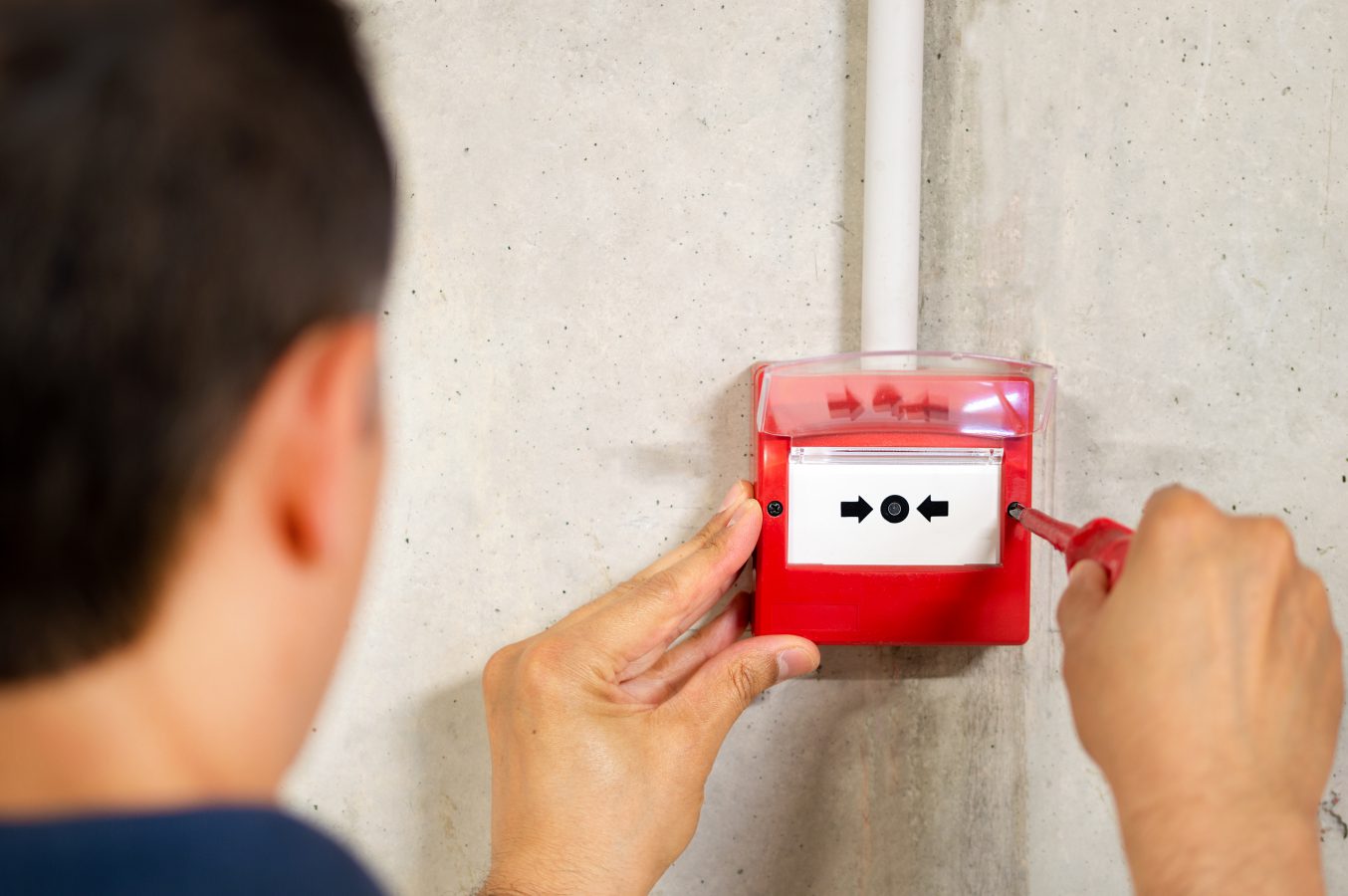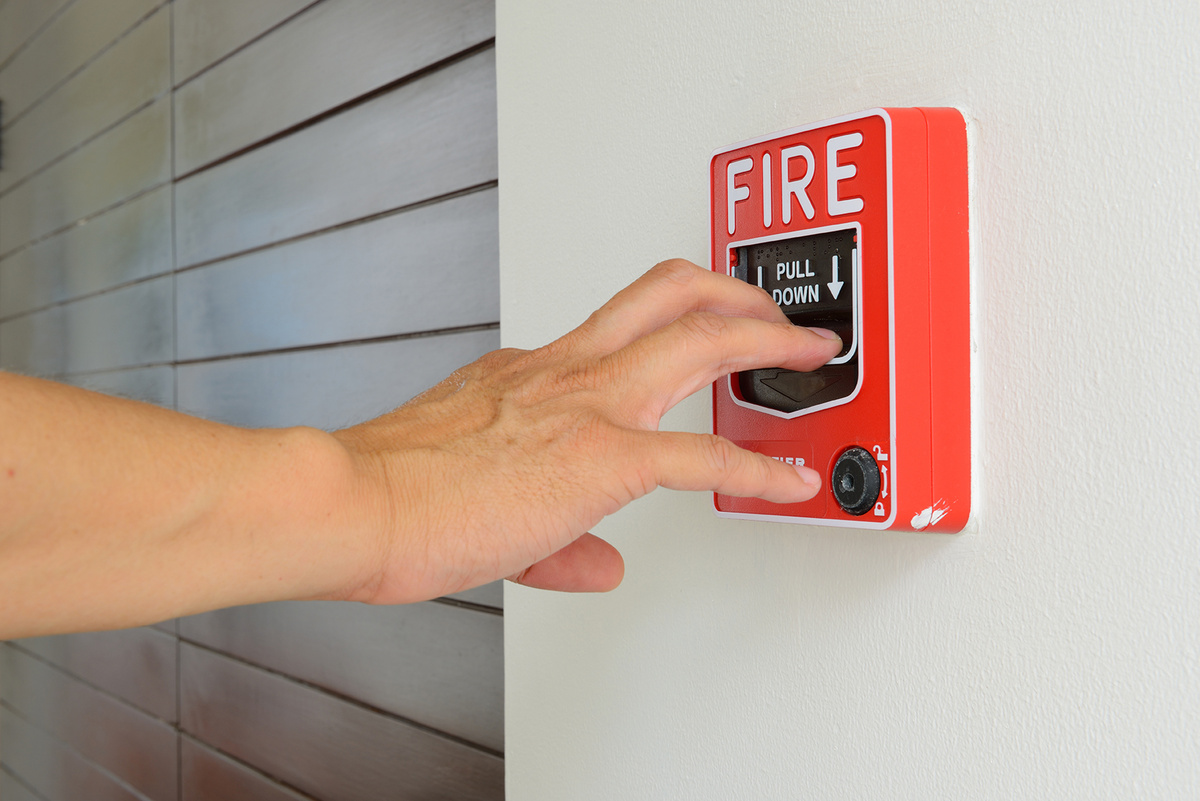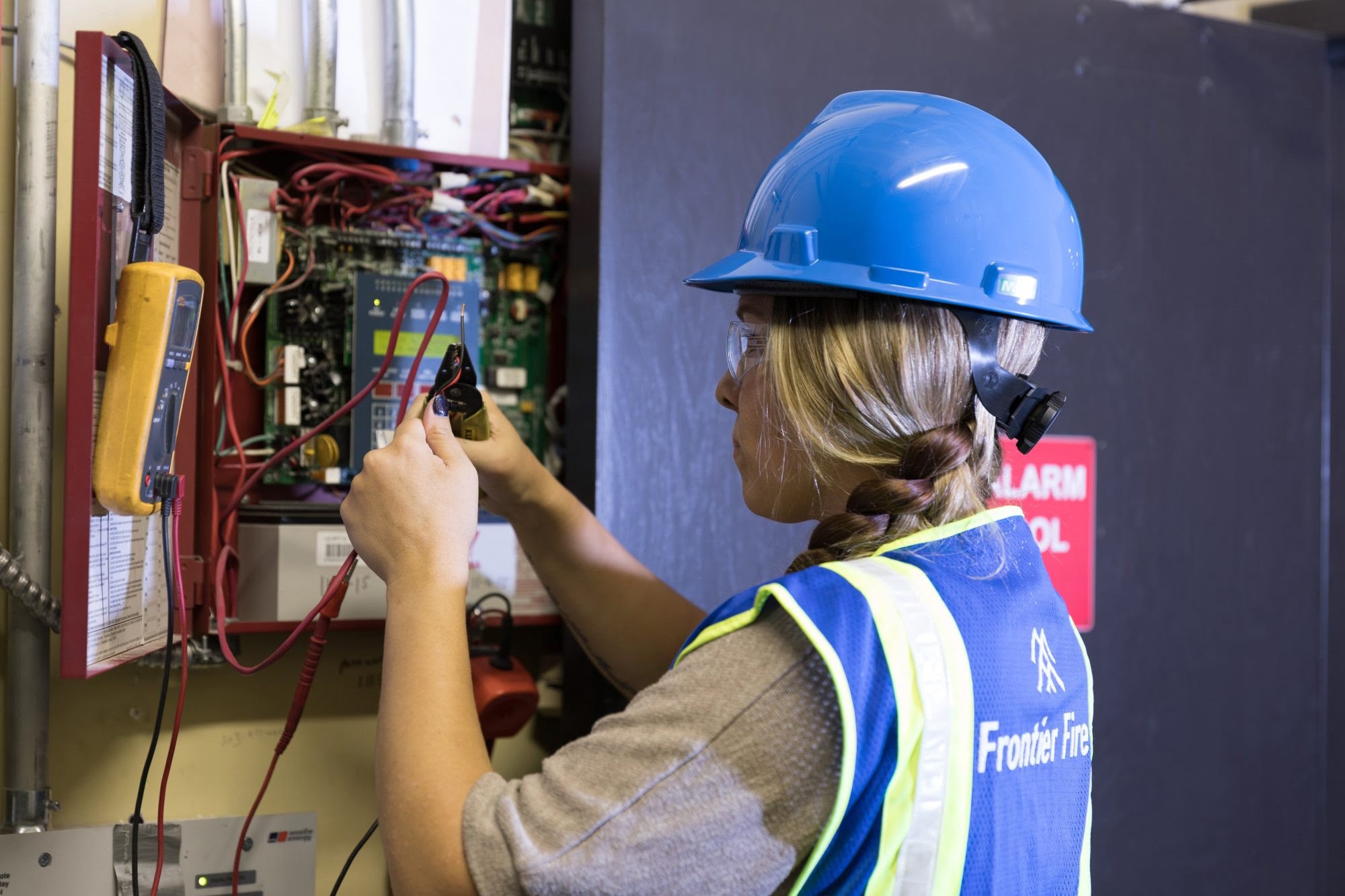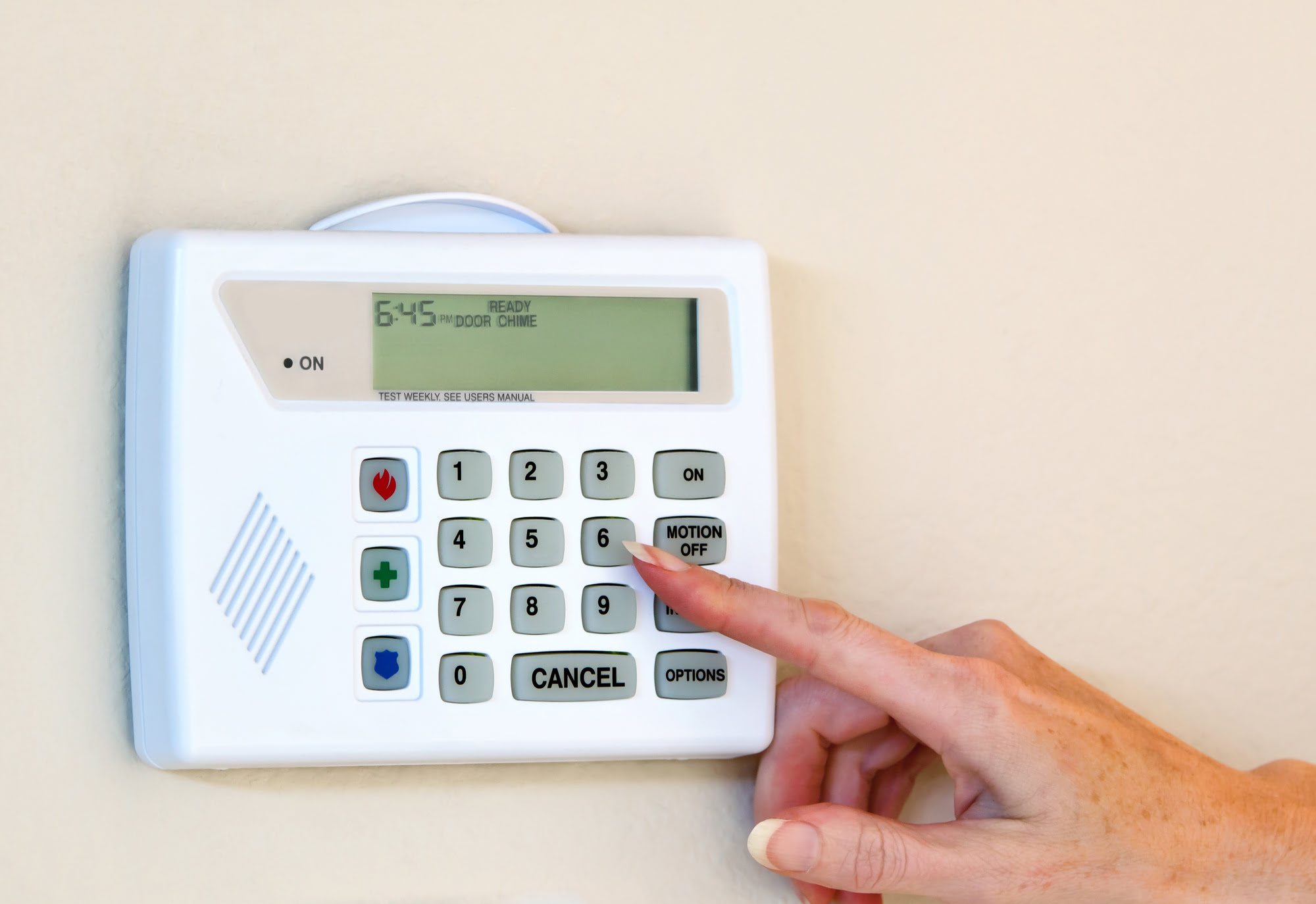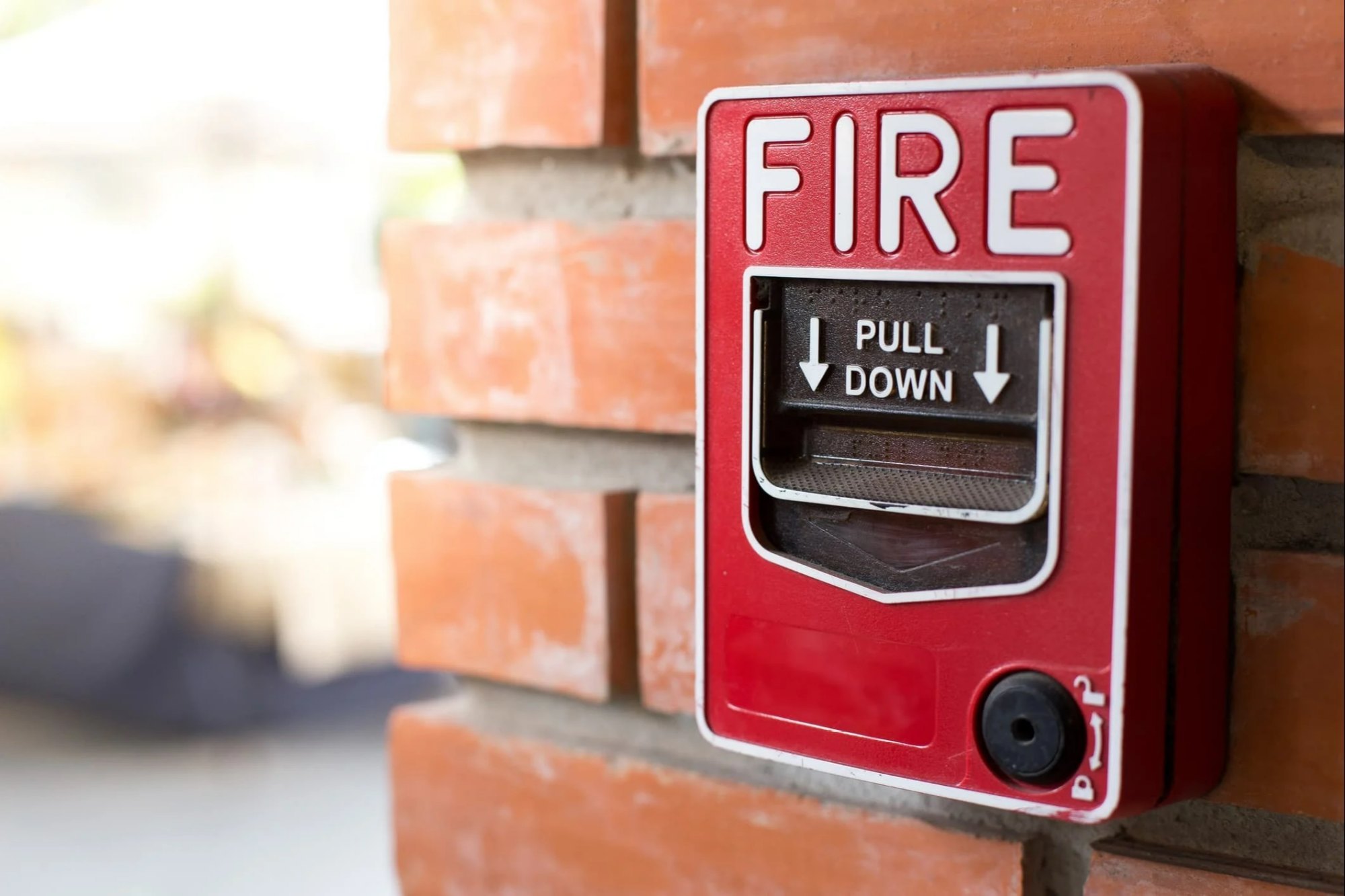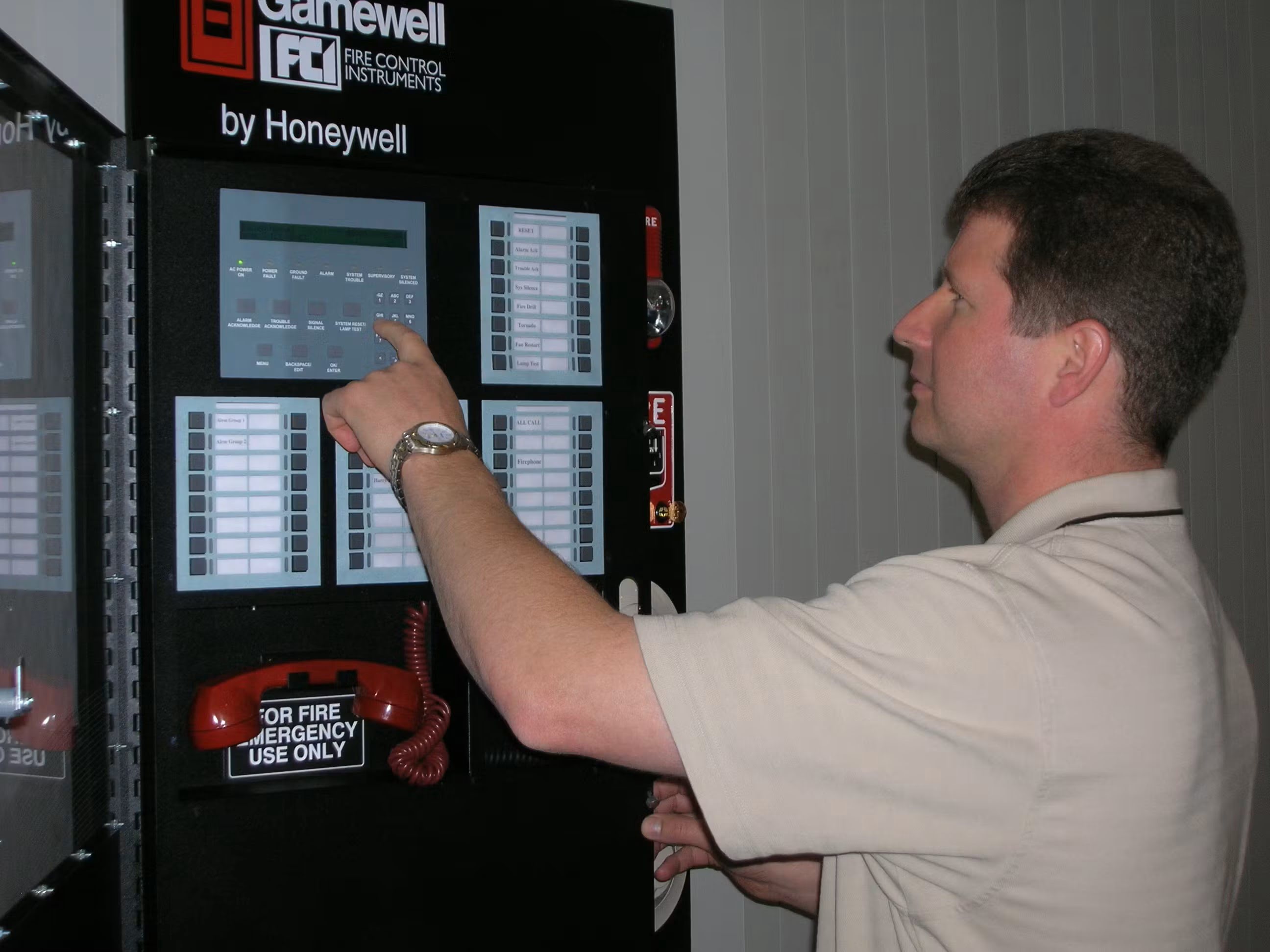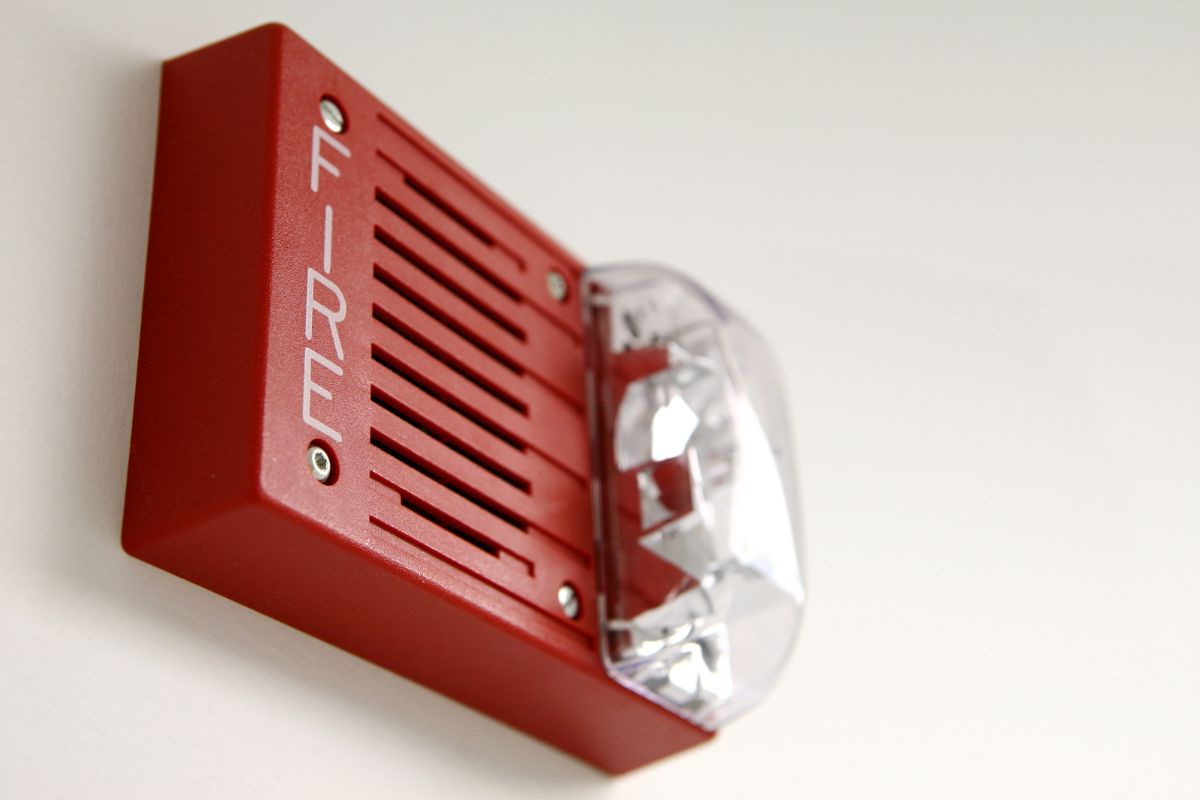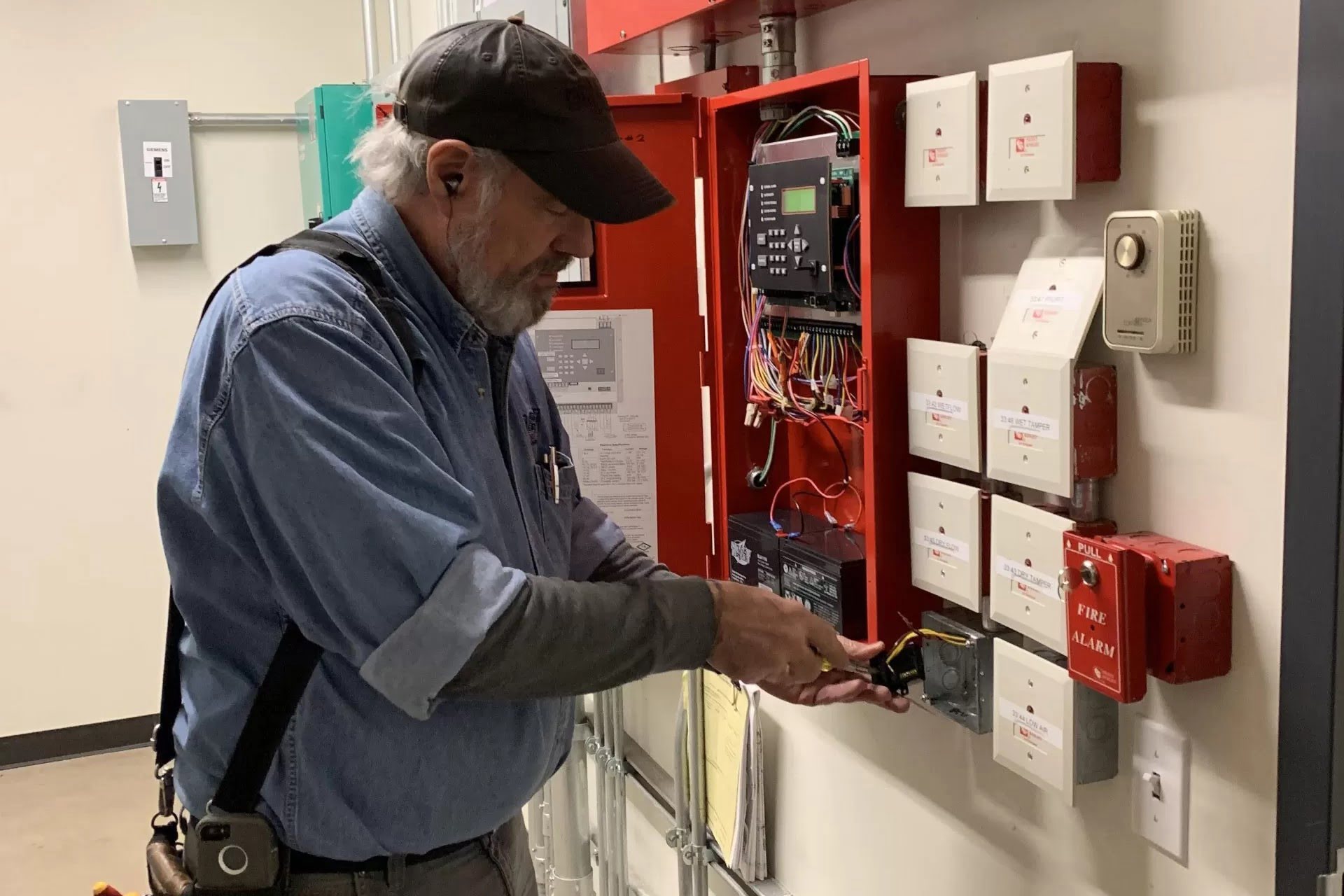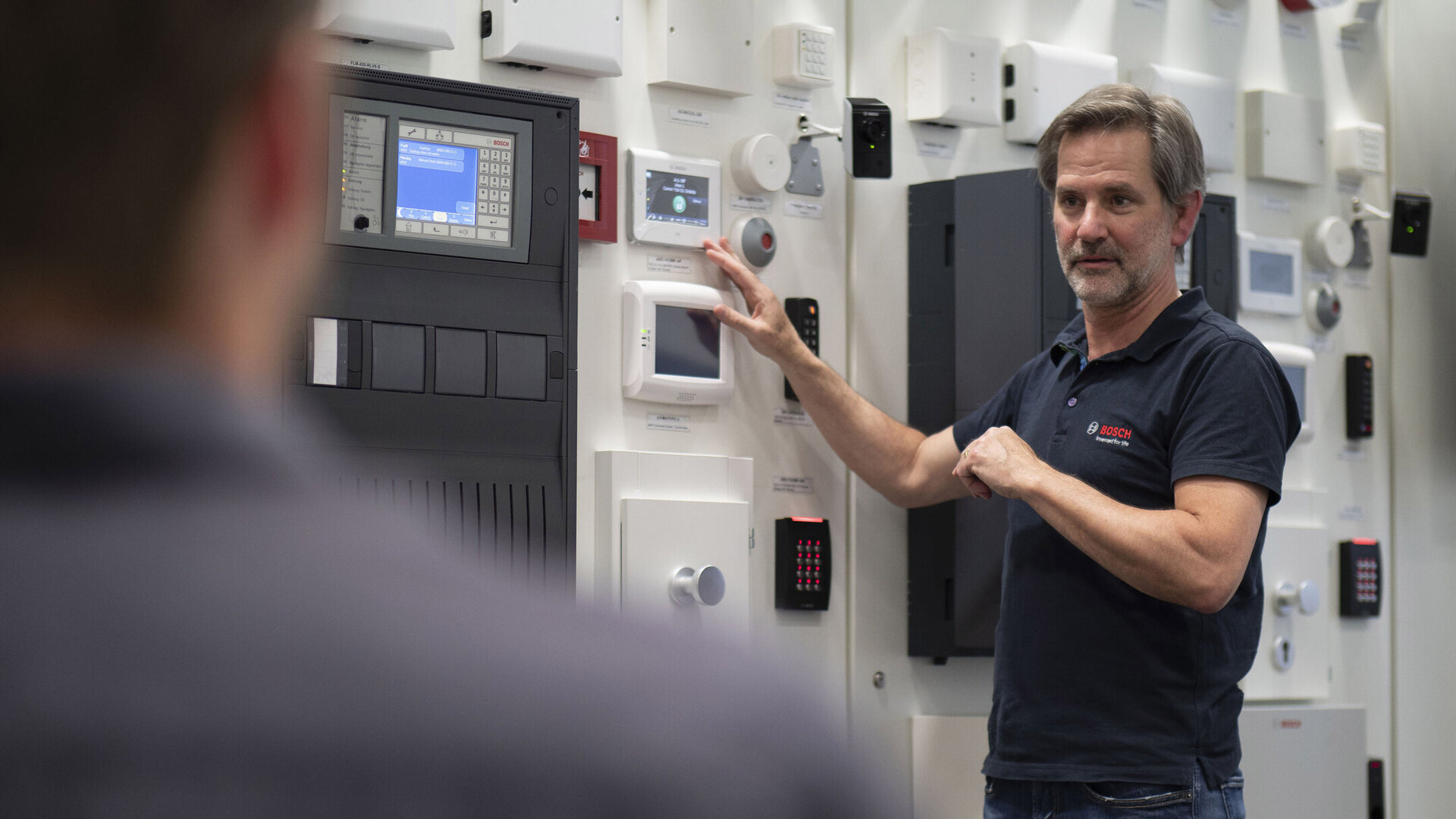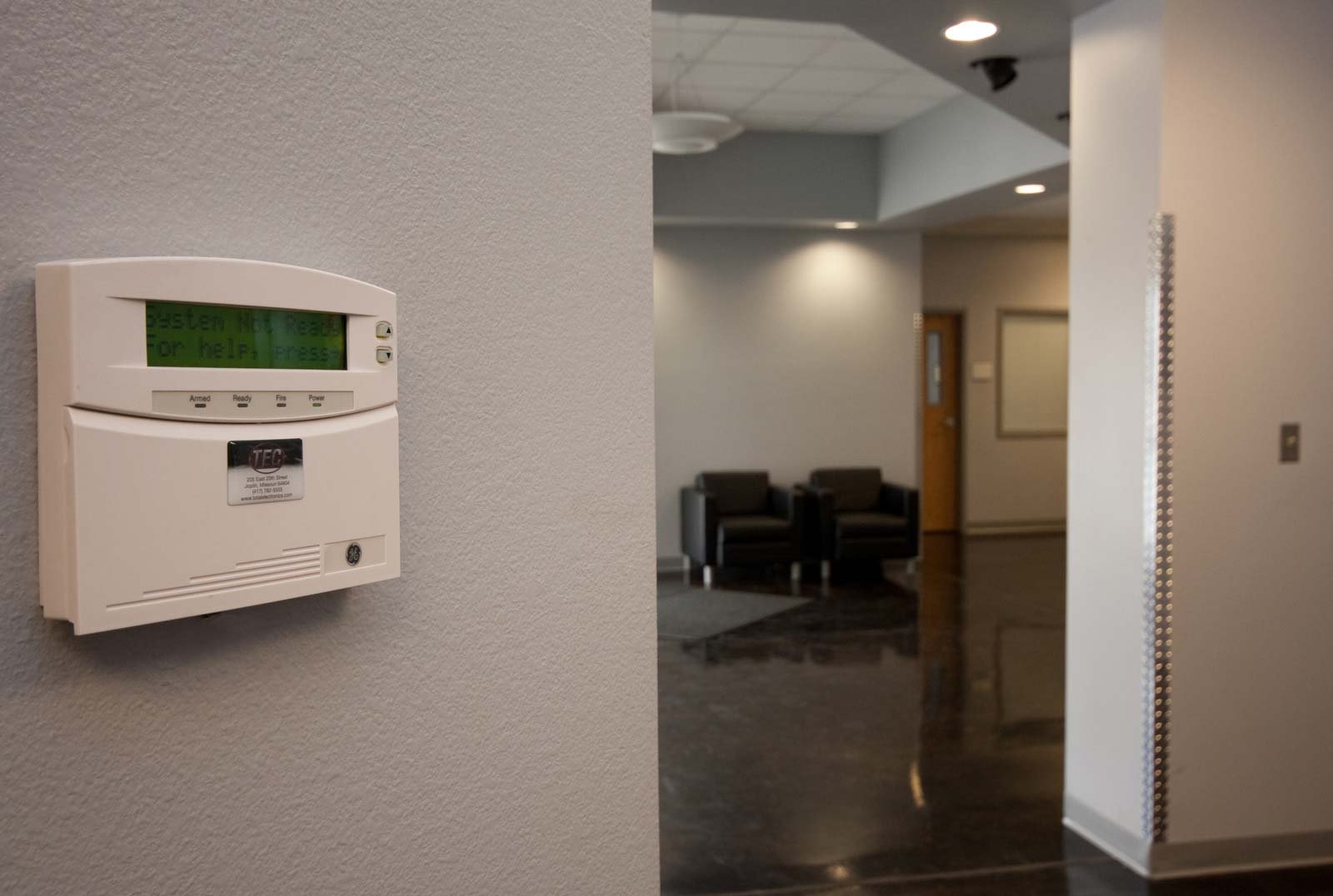Home>Home Security and Surveillance>How Are Fire Alarm Systems In Most High-Rise Buildings Programmed To Alert The Occupants?
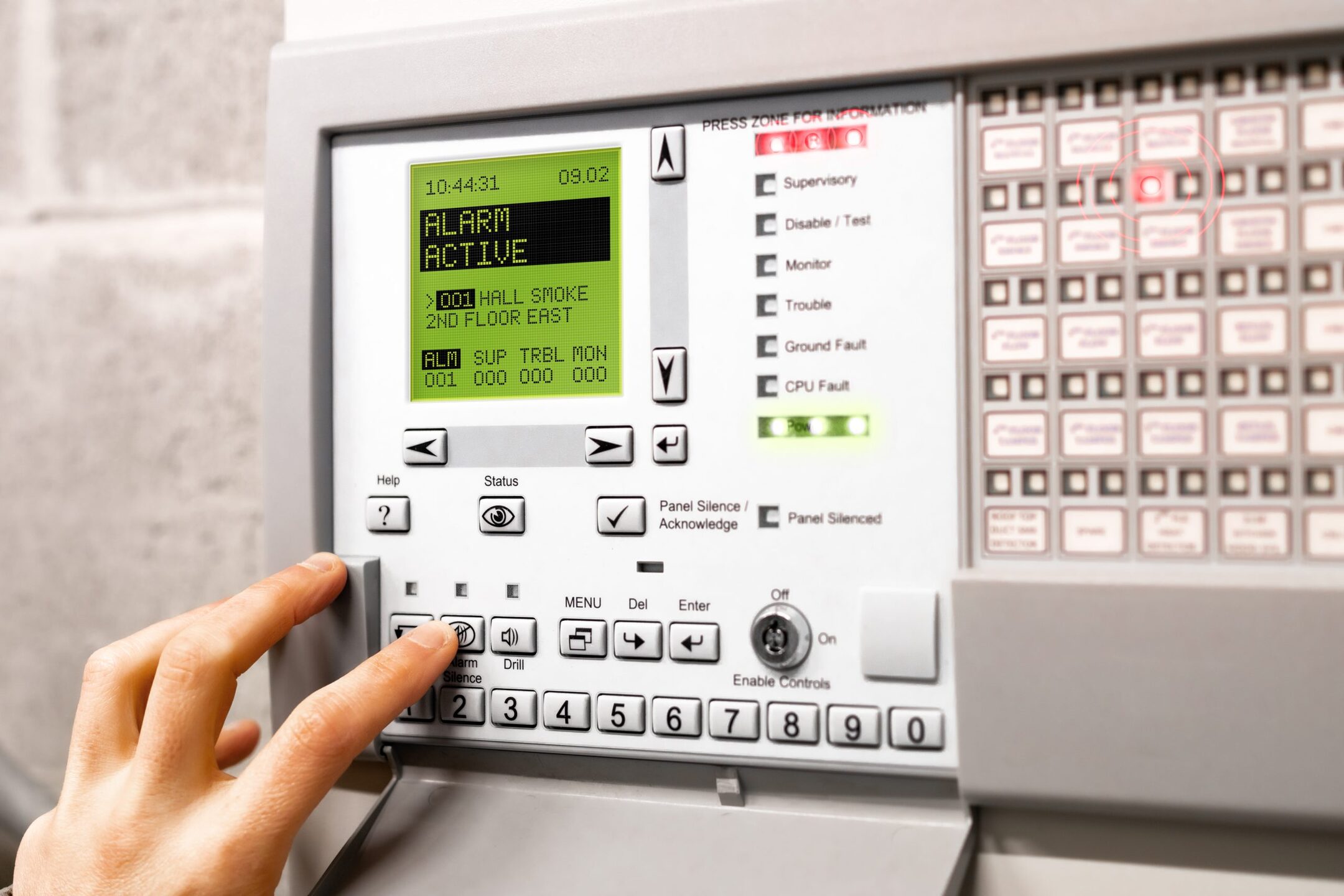

Home Security and Surveillance
How Are Fire Alarm Systems In Most High-Rise Buildings Programmed To Alert The Occupants?
Modified: March 6, 2024
Learn how fire alarm systems in high-rise buildings are programmed to alert occupants for improved home security and surveillance.
(Many of the links in this article redirect to a specific reviewed product. Your purchase of these products through affiliate links helps to generate commission for Storables.com, at no extra cost. Learn more)
Introduction
Welcome to the world of high-rise buildings, where safety and security are of paramount importance. In these towering structures, it’s crucial to have effective fire alarm systems in place to protect the occupants and prevent any potential disaster.
Fire alarm systems play a vital role in early warning and evacuation procedures, ensuring that people can safely escape in the event of a fire. One key aspect of these systems is their programming, which determines how they alert the occupants of a building when a fire is detected.
In this article, we will delve into the fascinating world of fire alarm systems in high-rise buildings and explore how they are programmed to quickly and efficiently alert the occupants. So, let’s dive in and uncover the technology that keeps these structures safe.
Key Takeaways:
- Fire alarm systems in high-rise buildings are programmed to quickly detect fires, set off audible alarms, strobe lights, and even communicate with occupants for a safe evacuation.
- Programming fire alarm systems involves dividing the building into zones, adjusting detector sensitivity, and using emergency communication to ensure everyone is alerted and guided during a fire emergency.
Fire Alarm Systems in High-Rise Buildings
High-rise buildings, also known as skyscrapers, pose unique challenges when it comes to fire safety. These tall structures can house a large number of occupants, making it crucial to have robust fire alarm systems in place.
Fire alarm systems in high-rise buildings are designed to detect fires and initiate appropriate responses to ensure the safety of everyone inside. These systems typically consist of various components, including smoke detectors, heat detectors, fire alarm control panels, and notification devices such as strobe lights and audible alarms.
One key reason why fire alarm systems in high-rise buildings are so important is the vertical nature of these structures. Unlike low-rise buildings, where a fire may be contained to a single floor, fires can easily spread upwards in high-rise buildings through stairwells, elevators, or ventilation systems. Therefore, it’s essential to have effective fire alarm systems that can quickly detect and alert occupants to evacuate in a timely manner.
Additionally, high-rise buildings often have complex architectural and structural features that can affect the performance and effectiveness of fire alarm systems. Factors such as the height of the building, the presence of multiple floors, and the layout of the building all need to be considered during the design and installation of these systems.
The installation of fire alarm systems in high-rise buildings is typically governed by local building codes and regulations to ensure compliance with safety standards. These codes specify the requirements for the type and placement of detectors, the capacity of the fire alarm control panel, and the audibility and visibility of notification devices throughout the building.
Overall, fire alarm systems in high-rise buildings are a critical component of the overall fire safety strategy. They help detect fires early, initiate appropriate responses, and provide occupants with the necessary information and warnings to evacuate safely.
Programming the Fire Alarm Systems
Programming plays a vital role in the functionality and effectiveness of fire alarm systems in high-rise buildings. It involves setting up various parameters and configurations to ensure that the system operates optimally and provides timely and accurate alerts to the occupants.
The process of programming a fire alarm system starts with a thorough understanding of the building’s layout and the specific requirements of the occupants. This includes identifying the locations of smoke detectors, heat detectors, and other devices throughout the building.
The programming of fire alarm systems in high-rise buildings involves several key steps:
- Zone Configuration: The building is divided into zones, each representing a specific area or floor. This allows for the precise identification of the location where a fire alarm is activated, enabling prompt response and evacuation.
- Device Sensitivity: The sensitivity of the detectors is set according to the specific needs of each zone. Different areas may have varying environmental conditions, such as kitchens or mechanical rooms, which require different levels of sensitivity to prevent false alarms.
- Alarm Verification: In some cases, fire alarm systems in high-rise buildings are programmed with a verification feature. This means that when a fire alarm is triggered, the system waits for a certain period to check if there is continuous activation before initiating evacuation procedures. This helps minimize false alarms caused by accidental triggers.
- Evacuation Signals: The programming includes determining the types of alert signals to be used for evacuation, such as audible alarms, strobe lights, or voice messages. These signals need to meet specific audibility and visibility requirements to effectively communicate with occupants on different floors.
- Emergency Communication: Some advanced fire alarm systems in high-rise buildings may include programming for emergency communication systems. These systems enable communication between the central command center and individual floors or areas, allowing for coordinated response and guidance during an emergency.
It is crucial to have experienced professionals, such as certified fire alarm technicians or engineers, perform the programming of fire alarm systems in high-rise buildings. They have the expertise to ensure that the programming is done accurately and in compliance with local regulations and industry standards.
Regular testing and maintenance of the programmed fire alarm systems are also essential to ensure their reliability and functionality over time. This includes periodic inspections, testing of detectors, and updating the programming as needed to adapt to any changes in the building’s layout or occupancy.
By programming fire alarm systems effectively, high-rise buildings can benefit from early fire detection, efficient evacuation procedures, and enhanced overall safety for their occupants.
Most high-rise building fire alarm systems are programmed to alert occupants through a combination of audible alarms, visual strobe lights, and voice announcements. These systems are designed to quickly and effectively communicate the presence of a fire and the need to evacuate the building.
Alerting the Occupants
When a fire is detected in a high-rise building, quickly and effectively alerting the occupants is crucial for their safety and evacuation. Fire alarm systems are specifically designed to deliver clear and unmistakable signals that can be easily understood by everyone in the building.
There are several methods employed to alert the occupants in high-rise buildings:
- Audible Alarms: One of the most common methods is the use of audible alarms. These alarms emit loud and distinct sounds, typically a combination of high-pitched tones and voice messages, to grab the attention of the occupants. Audible alarms are strategically placed throughout the building, ensuring that the sound can be heard on every floor and in every area.
- Strobe Lights: In addition to audible alarms, visual signals in the form of strobe lights are used to alert occupants who may have hearing impairments or who may not be able to hear the alarms due to other factors such as wearing headphones or being in loud areas. Strobe lights are placed in visible locations to ensure that they can be seen from various angles and distances.
- Emergency Communication Systems: Advanced fire alarm systems in high-rise buildings may also utilize emergency communication systems. These systems enable direct communication between the central command center and individual floors or areas. In addition to providing evacuation instructions, these systems can be used to provide updates and guidance to the occupants during the emergency.
- Public Address Systems: Public address systems are occasionally integrated into fire alarm systems in high-rise buildings. These systems allow for the broadcasting of live or pre-recorded voice messages that provide clear instructions and guidance to the occupants, helping them navigate the evacuation process more effectively.
The programming of fire alarm systems in high-rise buildings ensures that the alert signals are activated promptly and accurately when a fire is detected. The programming takes into consideration the type of alert signals to be used, the synchronization of audible alarms and strobe lights, and any additional communication features that may be available.
Training and education also play a vital role in ensuring that occupants are familiar with the fire alarm signals and understand what actions to take in case of an emergency. Regular drills and exercises help familiarize the occupants with the evacuation procedures and reinforce the importance of responding promptly to fire alarm signals.
It is important to note that fire alarm systems in high-rise buildings are connected to a central monitoring station or emergency services, allowing for prompt response and coordination during an emergency. Once the system is activated and the occupants are alerted, the appropriate authorities are notified, and emergency protocols are put into action.
By utilizing a combination of audible alarms, strobe lights, emergency communication systems, and public address systems, fire alarm systems in high-rise buildings ensure that occupants are promptly alerted and guided during a fire emergency, increasing the chances for a safe and orderly evacuation.
Conclusion
Fire alarm systems in high-rise buildings are a critical component of ensuring the safety and well-being of occupants. These systems are designed to detect fires early, initiate appropriate responses, and effectively alert the building’s occupants for a prompt and orderly evacuation.
The programming of fire alarm systems plays a crucial role in their functionality and effectiveness. By correctly configuring zones, setting device sensitivities, implementing alarm verification, determining evacuation signals, and enabling emergency communication, these systems can provide accurate and timely alerts to occupants.
Alerting the occupants in high-rise buildings requires a combination of audible alarms, visual signals like strobe lights, and potential use of emergency communication systems or public address systems. These alert systems are strategically placed and synchronized to ensure that they can reach all occupants throughout the entire building, even in challenging environments or during power outages.
Regular testing, inspection, and maintenance of fire alarm systems are essential to ensure their reliability and compliance with safety standards. Additionally, ongoing training and education of occupants to familiarize them with evacuation procedures and the importance of responding promptly to fire alarm signals are vital for everyone’s safety.
Ultimately, fire alarm systems in high-rise buildings are a crucial aspect of fire safety and emergency preparedness. Their proper programming and effective alert mechanisms provide occupants with the knowledge and time needed to evacuate safely during a fire emergency.
By investing in robust fire alarm systems, ensuring their accurate programming, and conducting regular maintenance and training, high-rise buildings can enhance the safety of their occupants and mitigate the potential risks associated with fires.
Frequently Asked Questions about How Are Fire Alarm Systems In Most High-Rise Buildings Programmed To Alert The Occupants?
Was this page helpful?
At Storables.com, we guarantee accurate and reliable information. Our content, validated by Expert Board Contributors, is crafted following stringent Editorial Policies. We're committed to providing you with well-researched, expert-backed insights for all your informational needs.
